Your home is beautiful. However, you can make it more beautiful by positioning living plants in strategic places.
When you use the right plant in the right spot, the appearance of your home will significantly improve.
Below are some cool ways to decorate your home using plants.
Table of Contents
11 Indoor Plant Décor Ideas
Here are some ways to use plants for your home decoration:
1. Fill Spaces in Your Shelves With Plants

If you have a shelf, check for some empty spaces. You could have some spaces that your books and other items on the shelf cannot fill.
Instead of leaving those spaces there, fill them with plants. You can use little succulents, such as cacti, to fill these spaces.
If the plant grows larger than the space, replace it with a smaller one.
2. Place Trailing Plants on Shelf Tops
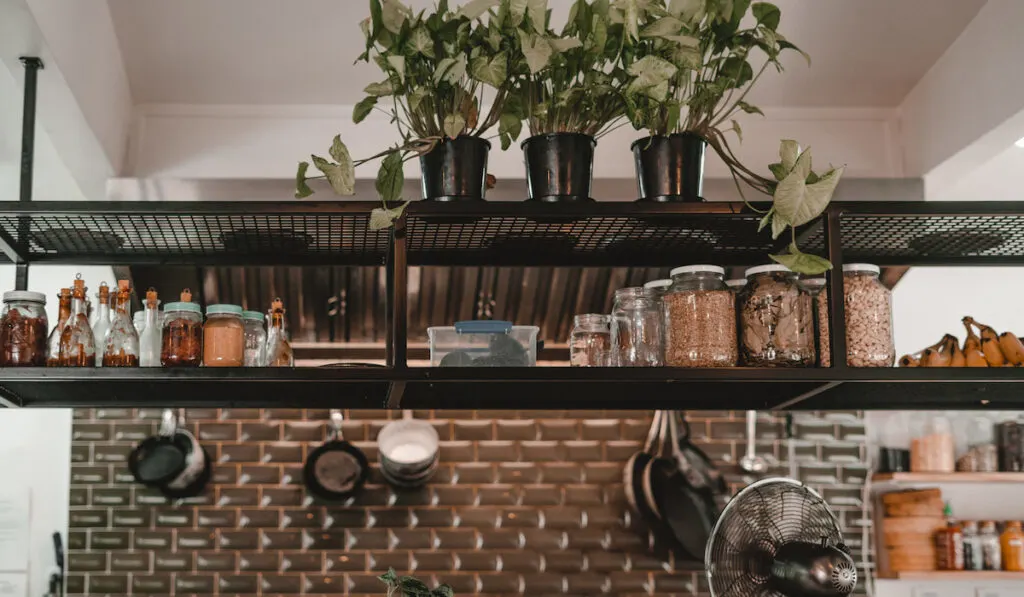
If you have plants such as the string-of-pearls succulent, you can make your shelf decorative by placing the plant on top.
The beautiful bead-like leaves will fall gracefully from the shelf, swinging as the wind blows.
You can keep the leaves at the side of your shelf so that they do not cover your books or the items on the shelf.
3. Install a Cage for Your Climbers
Do you have climbing plants such as the Swiss cheese plant? You can boost their look significantly when you use a cage.
It is common for indoor gardeners to grow such plants using a stake. However, the beauty of the cage will combine with that of the plant to create magic in your room. Cool, right?
4. Get an Air Plant for the Room
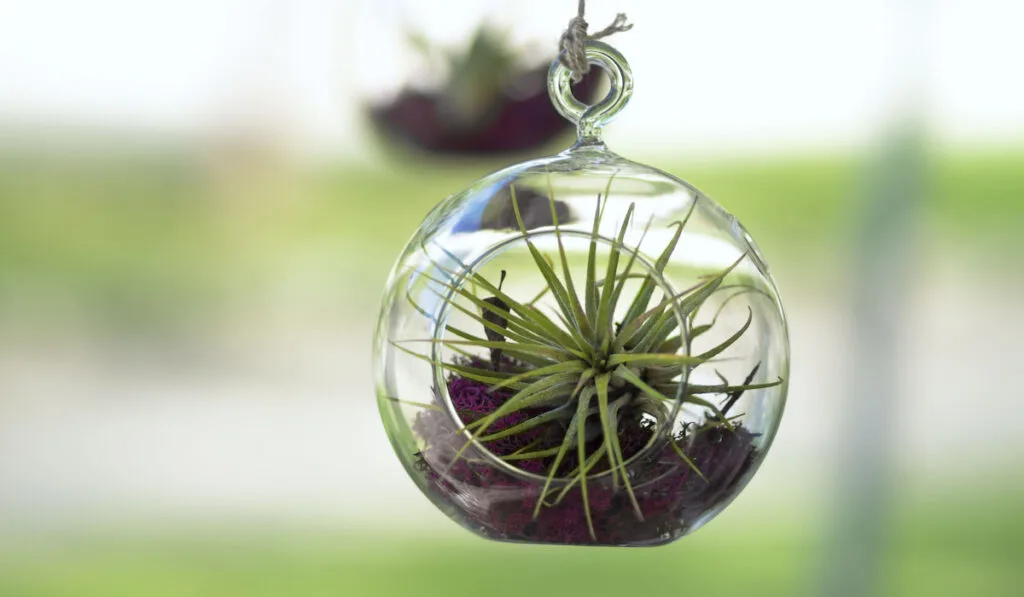
Air plants are very special plants. You don’t even need soil to grow them. If you are a lazy gardener and want the perfect room, these plants are for you.
Buy multiple air plants—different colors if possible—and keep them in different parts of your room.
You can even keep them above your bed so that their beautiful leaves will be the first thing you see when you wake up.
5. Keep Standalone Plants in Passages
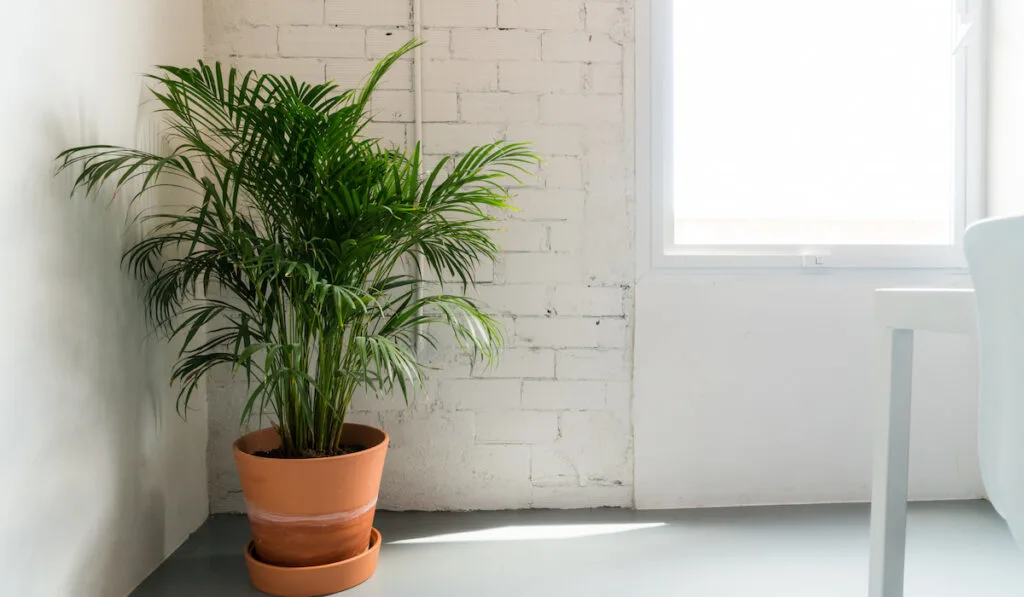
Do you have a beautiful plant such as the majesty palm? Imagine how it’ll look when it grows as a standalone plant at the end of a passage in your home.
Standalone plants are plants that grow alone in a spot.
You don’t have to make the place look busy by adding other plants.
When growing plants in passages, ensure that you supply them with enough light.
6. Have a Plant Theme for a Room
Do not make your room too busy by growing just any type of plant in it. Create a theme.
You can make a plant theme by growing only plants of a specific genus.
You can also make a color theme by only growing plants with a specific color.
Ensure that your theme matches or contrasts with the color of your room.
7. Keep Simple Plants on Tables and Desks
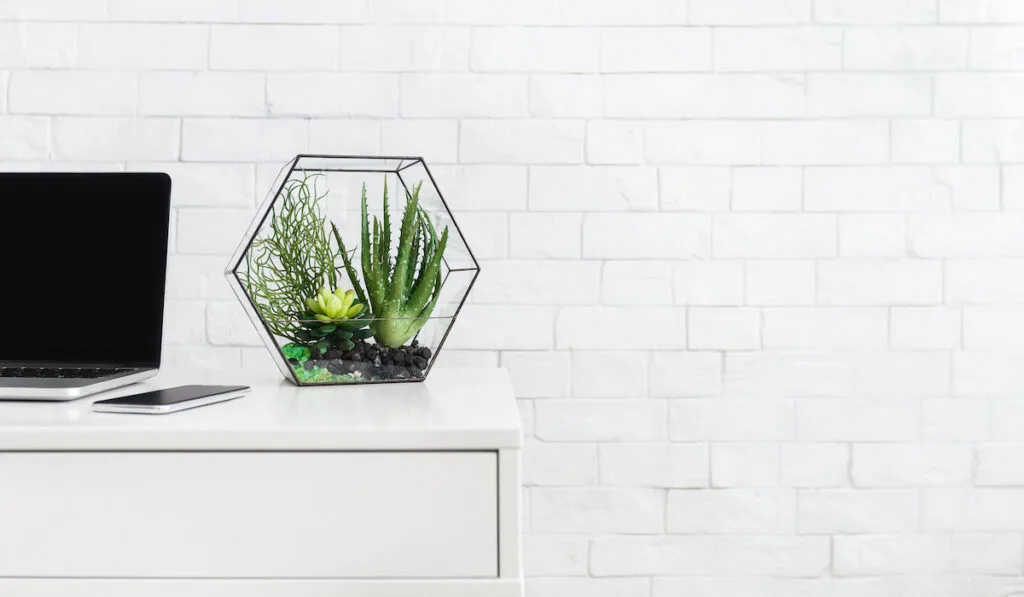
If you have cute plants such as aloes and jade plants, consider placing them on your table.
This is a very common method of decorating homes with plants, and it’ll surely make your room look beautiful.
Remember to use a saucer beneath your pot.
Place the pot on the saucer so that excess water and nutrients do not spill on the table and stain its surface.
8. Install a Grid Frame for Your Climbers
A grid frame is simply a mesh-like frame that can help your climbing plants. Keep the frame on a table or the floor and rest it on a wall.
Choose a wall that faces the window, or ensure that you install grow lights above the climbing plant.
If you do not keep the frame in the right place, the plant will grow toward the light and not climb the frame.
9. Decorate Your Bathroom With Forest Plants

If you want plants in your bathroom, use epiphytes.
Epiphytes are plants that grow on trees and other plants. These plants are best suited for the bathroom environment.
Most epiphytes grow in forests. The tree canopy blocks sunlight from reaching them, and the humidity is usually high.
In a bathroom, the plants will likely not get direct sunlight, and the humidity is high.
As you can see, a bathroom is a suitable place for forest epiphytes.
10. Install Hanging Baskets Across Your Home
Hanging baskets help you to easily plant trailing and even climbing plants, so use hanging baskets in your home.
You can hang your plants wherever you want, so long as the room is well-lit.
When growing plants with hanging baskets, please remember to water them, as many gardeners forget their suspended plants.
11. Buy and Install a Planted Aquarium
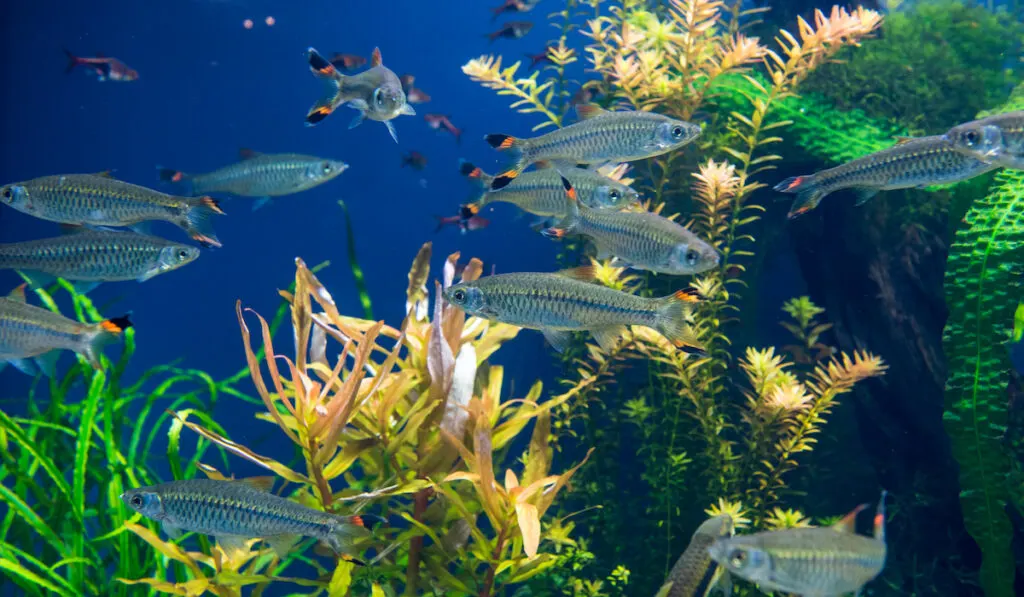
How else can you beautify your home if not with an aquarium?
If you have an aquarium or yoe planning to buy one, keep some plants inside and around the aquarium.
You can plant water lilies and whatever you want; just make sure the plants can comfortably grow in or around water.
5 Tips to Care for Your Plant Decor
While plants are beautiful, you have to retain their beauty by caring for them. Here are some essential tips to care for your plant décor:
1. Always Consider the Growth Requirements of Your Plants
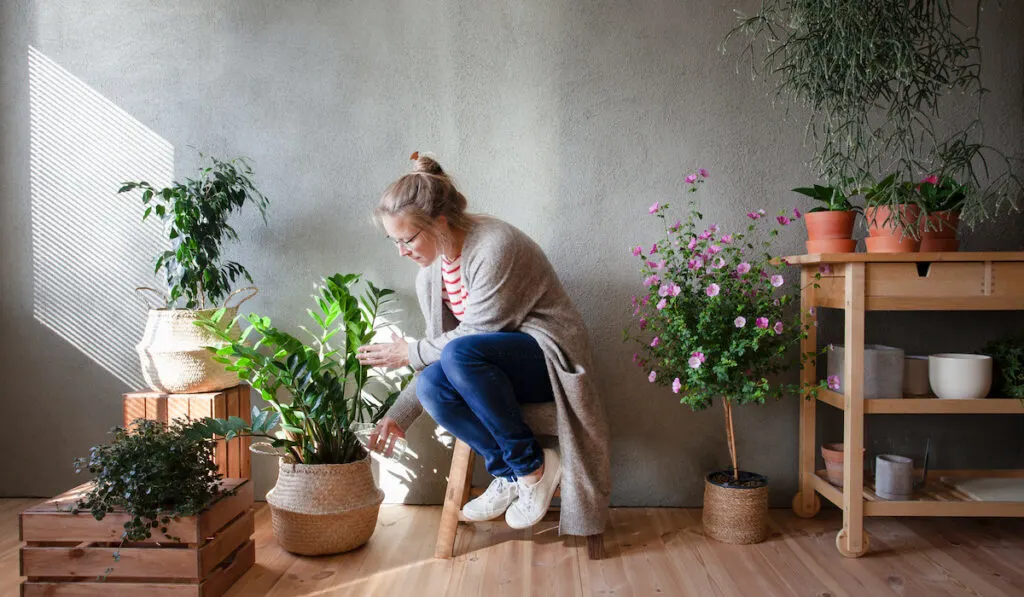
Consider the needs of your plants because if they do not grow in the right environment, their beauty will not last for long.
Here are growth requirements worth considering:
- Temperature: Every process in plants, such as growing, flowering, and fruiting, depends on temperature. No plant will grow when you plant it outside its temperature range.
- Humidity: Humidity helps plants to collect water from the soil. Plants growing outside their humidity range may develop swollen leaves.
- pH: Soil pH helps regulate the types of nutrients that your plants can collect. Plants growing in unsuitable substrates will hardly collect the necessary nutrients or water from the substrate.
- Water: Every living organism needs water to grow. Never let your plants get dehydrated.
- Nutrients: Nutrients are like the blocks through which a plant grows. Without nutrients, your plants will not grow.
- Light: Plants get energy through the process of photosynthesis. This process only occurs in the presence of light.
2. Buy or Make the Best Substrate
Most plants need well-drained soil that can also retain some water. If you are a first-time gardener, buy potting mix for your plant décors so that you do not make a mistake.
The type of substrate that you buy depends on the type of plant that you grow. Only buy a general indoor plant substrate when there’s none available for your specific plant.
If you are an expert grower, you can make the potting mix for your plants by yourself.
Ensure that you use sufficient perlite so that the substrate can drain water quickly.
Most décor plants are suspended or on shelves, so use a substrate with nutrients. This substrate will prevent you from spraying too much fertilizer on your plants.
Remember that fertilizer (just as water) can run over and stain surfaces.
3. Create a Watering Schedule
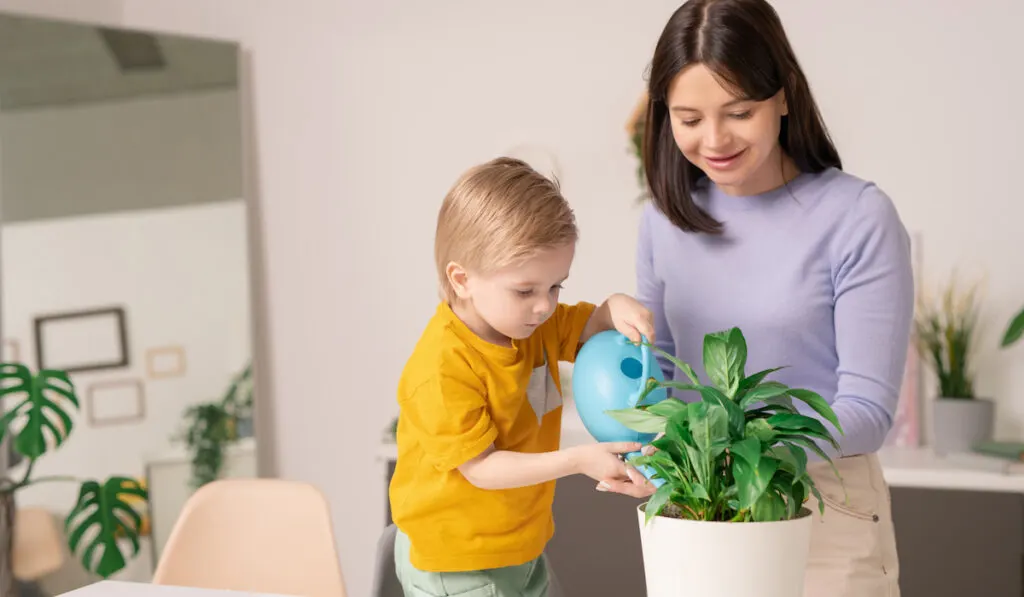
One slight challenge in growing plant décor is that different plants have different watering needs.
This means that you will most likely water your plants on different days of the week.
To help you remember which plant to water on a specific day, make a watering schedule.
Write the number of times each plant needs watering per week, and only give your plants water when they need water.
If you can’t make a watering schedule, there’s another way to water your plants without problems. Wait until the potting mix is slightly below “half dry” and then water it again.
You can use a soil moisture reader to know how dry the plant substrate is.
If you are growing succulents, note that you’d have to wait until the substrate is almost fully dry before you water them.
4. Repot Your Plants When You Have To

There’ll come a time of the year when you have to work for your plants. Some plants will grow bigger than their pots. Others will have a nutrient-depleted substrate.
There are many reasons to repot plants. When you see that a plant needs repotting, don’t fail to repot the plant.
Go for a slightly larger pot so that there will be enough space for the plants to grow bigger. Also, use a new substrate or sterilize the old one for the plants.
When transferring your plants between pots, please be extra careful with the roots.
Also, check for and remove dead roots from each plant.
5. Keep Toxic Plants Far From the Reach of Children and Pets
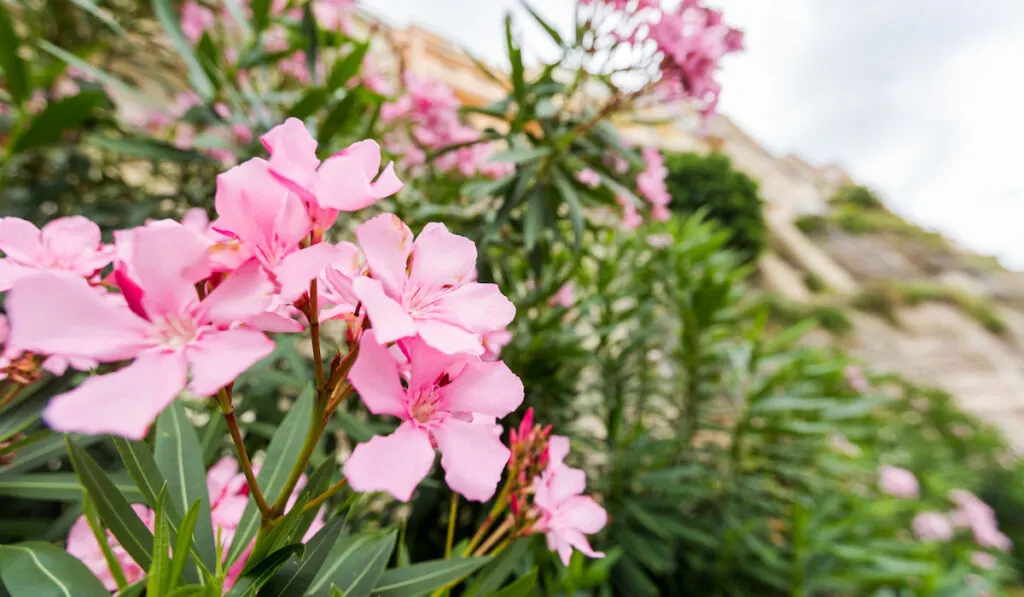
This is not a plant care tip; it is a general indoor planting tip. Some poisonous plants are very attractive, and so you’d want to grow them indoors.
While you can grow these plants indoors, remember that if you have children or pets, there’s a high chance that the kids might play with your plants.
You do not want this to happen, so keep your toxic plants out of reach of kids and pets. You can grow the plants in hanging baskets or keep their pots on shelves.
Also, educate your kids and tell them why they should not play with or eat the leaves of poisonous plants.
Conclusion
Your home will surely get just the right look when you use the right type of plants.
Remember that the location of your plants determines their access to sunlight, so grow plants that can grow comfortably inside.
Also, take caring for your plant décor seriously so that the plants can stay beautiful, as always.
Resources
- https://www.bhg.com/gardening/houseplants/projects/decorating-with-houseplants/
- https://blog.mytastefulspace.com/2020/04/15/plant-decorating-unique-ways-to-decorate-your-home-with-plants/
- https://www.homesandgardens.com/interior-design/decorating-with-plants
- https://balconygardenweb.com/indoor-plant-wall-decor-ideas/
